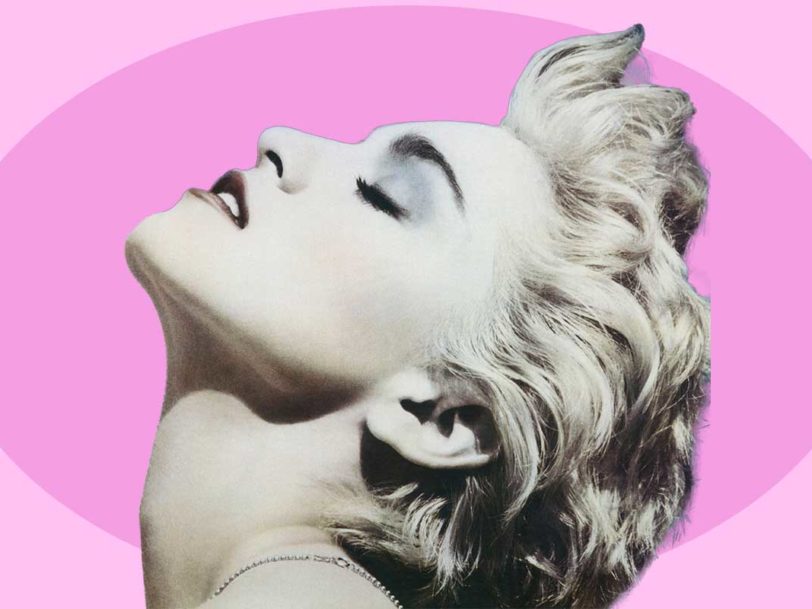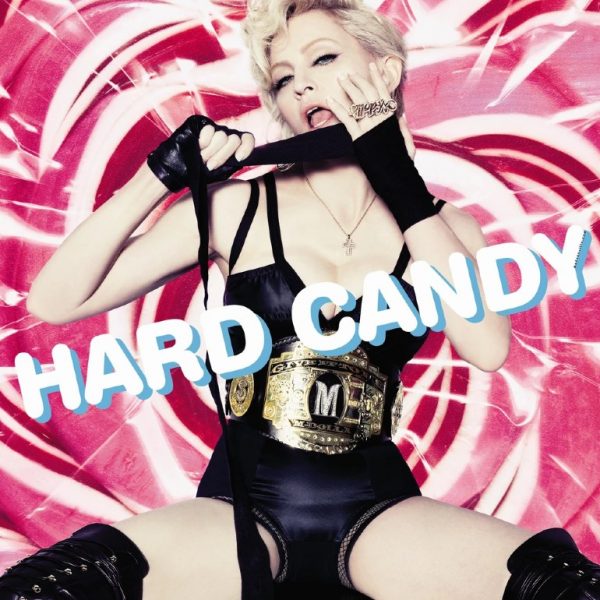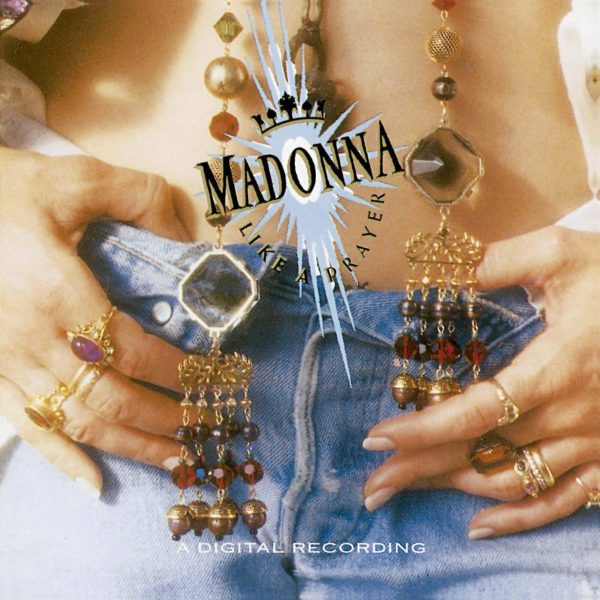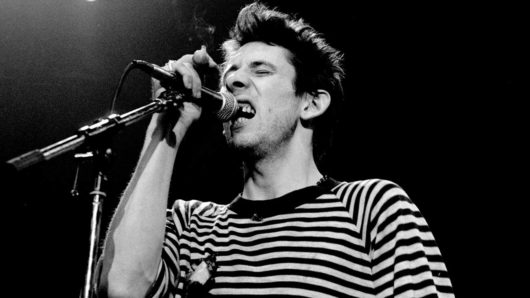Madonna, the mistress of musical reinvention, also has as a knockout track-record of visual re-engineering. From the “Boy Toy” phenomenon of her breakthrough to the platinum pop-princess styling of the mid-80s, the scandalous Sex era of the early 90s and the urban reinvention of collaborations with Timbaland and Justin Timberlake in this millennium, each musical twist and turn has been matched by a pioneering flair for visual presentation. What better way to explore that journey than through each of the Queen Of Pop’s studio collections released to date? In this countdown of all 14 Madonna album covers, we track – and, yes, judge – each of those iconic artworks in order of their impact and artistry. So… let’s get to it, score that pose… there’s nothing to it…

Madonna Album Covers: All 14 Studio Artworks, Ranked And Reviewed
As chameleonic as any of her contemporaries, the best Madonna album covers stand as some of the most recognisable artworks in the world.

14: ‘Hard Candy’ (2008)
The final studio album of her long-standing partnership with Warner Music, Hard Candy saw Madonna reclaim the pop crown in the US by collaborating with cutting-edge hitmakers such as Timbaland and Pharrell Williams. The album cover featured a portrait created during sessions for an Interview magazine shoot, depicting Madonna in a boxing ring. She was allegedly referencing the toughness she’d needed to steer a career of her scale over such a long time, and the boxing theme seemed to fit that focus on perseverance and strength. A more controversial idea (among no shortage of controversial Madonna album covers) was to create a “Black Madonna” – abandoned because of the outrage it may have caused. “It has layers of meaning and, for a minute, I thought it would be a fun title for my record,” she told Rolling Stone. “Then I thought: 25 per cent of the world might get this, probably less, it’s not worth it. It happens all the time, because my references are usually off the Richter scale.”
Photographer: Steven Klein

13: ‘Erotica’ (1992)
While landing successful roles in family films such as Dick Tracy and A League Of Their Own, the leftfield turn in Madonna’s musical direction at the same time is, today, almost incomprehensible. The Queen Of Pop had always flirted, and sometimes provoked, but the Sex era’s simple manifesto of shock might be painted as a Herculean attempt to derail a phenomenal career, or a heartfelt move to expose the hypocrisy of human sexuality. It was a conservative time. No wonder the music got lost in all the fuss; so, too, perhaps the Erotica artwork, by Sex book collaborator Steven Meisel. One of the most provocative Madonna album covers, the startling graphic rendering of a very personal moment was matched by that infamous toe-sucking shot on the rear sleeve. What was she thinking? Anyone who saw the Sex book knows exactly what…
Photographer: Steven Meisel

12: ‘Confessions On A Dance Floor’ (2005)
The commercial renaissance triggered by Confessions On A Dance Floor came at a critical moment in Madonna’s career. Though it hit No.1 around the world, the American Life album had sold less than any Madonna album to that point, prompting a radical rethink – and where better to draw from than her own phenomenal backstory? This was a return to her 80s dancefloor supremacy, carefully reimagined for the 21st century and steered by British studio wizard Stuart Price. The playful Saturday Night Fever styling offered a strong visual anchor to the Hung Up music video and lent the image of that soon-to-be-iconic pink leotard to the Steven Klein photo used on the cover of the critical and commercial masterpiece it promoted.
Photographer: Steven Klein

11: ‘Music’ (2000)
Securing Madonna her best-ever opening-week sales, Music was a creative step deeper into the madcap electronica of 1998’s Ray Of Light and was largely helmed by long-time collaborator Mirwais. The iconic title track took her to the top of the charts both sides of the Atlantic, while the Jean Baptiste-Mondino cover shot felt like a fashion-forward element of the wider packaging’s styling, which played up to the folk-pop undertones of many of the album’s tracks. Some further visual references from this approach can be seen in the videos for both the album’s title track and its follow-up single, Don’t Tell Me, alongside many of Madonna’s promotional appearances during this period.
Photographer: Jean Baptiste-Mondino

10 : ‘MDNA’ (2012)
After a long gap away from the recording studio, MDNA is the sound of an attempt to recapture dancefloor glories. The line-up of EDM titans supporting the recording, such as Benny Benassi and Martin Solveig, should have assured this disc louder cut-through, but radio programmers had lost interest while Madonna’s attention was better focused on her position as the world’s most successful touring act. This simple Mert Alas and Marcus Piggott (aka Mert & Marcus) design is a pleasing piece of graphic art that steps away from some of the high-concept ideas behind other Madonna album covers, simply referencing the kaleidoscopic experience of dancefloor abandon aided and abetted by – just possibly – a little chemical support. Well, just look at the album title…
Photographers: Mert Alas, Marcus Piggott

9: ‘Rebel Heart’ (2015)
The lengthy and disjointed approach to recording Rebel Heart wasn’t soothed by the chaotic nature of its eventual release, with tracks leaked online and that infamous fall at the Brit Awards. All of the record’s many collaborators praised Madonna’s determination to create her best album yet, but the process of co-ordinating the material with a cast of thousands clearly took its toll. Despite great cuts such as the underrated dance anthem Living For Love and the outstanding ballad Ghosttown, the collection failed to find its commercial groove. The Mert & Marcus photo wasn’t the first Madonna album cover to reference the star’s image of herself as a freedom fighter, and the styling lent itself to multiple meme treatments on social media – a platform Madonna was increasingly making her own at the time.
Photographers: Mert Alas, Marcus Piggott

8: ‘Madame X’ (2019)
Bringing the Madonna story bang up to date, Madame X saw The Queen Of Pop finally abandon the pressure to outperform her illustrious past with a creative concoction of wherever the mood took her – the influence of her Portugal home in the Fado-inspired I Rise, or the cultural cross-pollination of the hypnotic Batuka reshaping her sound into something more surprising than anyone could ever have anticipated on her breakthrough in 1984. One of the more theatrical Madonna album covers, the construct of the Madame X sleeve was a reference to her shape-shifting skills, with the cover art providing an homage to her late mother in striking Frida Kahlo styling… entirely impossible to pigeonhole, which – at this stage of her long career – is precisely how Madonna likes it. Multiple editions of the album and memorabilia packaged with variant cover shots make the whole Madame X project very much a visual collaboration with Steven Klein and Madonna’s personal photographer Ricardo Gomes.
Photographer: Ricardo Gomes | Designer: Steven Klein

7: ‘Bedtime Stories’ (1994)
Presenting a more seductive pose after the graphic controversy of Erotica, this mid-90s move towards the urban pop increasingly dominating international charts is one of Madonna’s warmest collections. Hits such as Secret and Take A Bow (the longest US Billboard chart-topper of her career) softened public opinion and supported her campaign to secure the prize she had fought longest to achieve: the starring role in the movie production of Evita. This cover shot could be classic Like A Virgin-era Madonna were it not for the nose-ring: a sign, perhaps, that she remained an artist determined to do it her own way.
Photographer: Patrick Demarchelier

6: ‘American Life’ (2003)
Determined to stay one step ahead of expectation, Madonna’s decision to stick with Mirwais on Music’s follow-up was about the only predictable decision she made on American Life. The agitated electro-pop often packs a political edge, best illustrated by the melodic title track, and the album also featured the stuttery 007 success Die Another Day (still one of the biggest James Bond theme songs ever stateside). The striking portrait by British fashion photographer Craig McDean followed his work with Madonna on a Vanity Fair cover the previous year, casting her as a cross between Patty Hearst and Che Guevara.
Photographer: Craig McDean

5: ‘Like A Prayer’ (1989)
For her first major critical reinvention, the sleeve that housed this classic album might also be billed as one of the most daringly experimental Madonna album covers. By 1989, Madonna trailed only Princess Diana as the most famous woman in the world, so the bold move of ignoring her face and, instead, focusing on her fingers (of course, teasingly close to her crotch) and that famous belly button was – however unintentional – a bullseye homage to The Rolling Stones’ classic Sticky Fingers sleeve. Early copies of Like A Prayer came scented in patchouli oil, adding to the charming, counterculture vibe of the project, which packed a whimsical wisp with its powerful pop punch. Mindful of her role as a sexual crusader, Madonna also included an AIDS fact-sheet in copies of the album. Cover photographer Herb Ritts would also direct one of Like A Prayer’s most successful videos, for third single Cherish.
Photographer: Herb Ritts

4: ‘Like A Virgin’ (1984)
As her star began to explode across the planet, Madonna became frustrated that the never-ending success of her first album was starting to delay the second. Like A Virgin was a calculated move towards pop’s premiere league, with the canny choice of superstar producer Nile Rodgers sending a determined signal that nothing was going to be left to chance. Stylist Maripol was there to transform Madonna’s image from the confident street-punk chic of her debut into something altogether more direct and grown-up: the “Boy Toy” belt, the tousled hair, rumpled sheets and a bridal gown – this was more provocative come-on than playful tease. And they came… again and again. At its peak, Like A Virgin was reported to be selling 80,000 copies a day.
Photographer: Steven Meisel

3: ‘Madonna’ (1983)
For an artist so indelibly defined by her (ever-changing) image, no one even knew what Madonna looked like at the very beginning. Unsure how to market their latest New York disco act, Sire Records chose to release her first 7”, Everybody, sleeved in a street-scene montage by designer Lou Beach, with their future superstar nowhere to be seen. An early mock-up of Madonna’s first album saw it titled Lucky Star and featured soft-focus cover art by Edo Bertoglio. It looks like an of-the-era abandoned Cosmopolitan magazine shoot. Instead, an edgy studio shot by Gary Heery perfectly caught her street-smart attitude and was run in striking monochrome.
Photographer: Gary Heery

2: ‘Ray Of Light’ (1998)
The restless determination to mirror professional reinvention with the major changes in her personal life resulted in Madonna’s most critically acclaimed collection. Boasting not only some of the best Madonna songs of her already lengthy career, but one of the most memorable Madonna album covers to boot, Ray Of Light found a truly magical fit with William Orbit: Madonna’s meandering emotional and lyrical response to his experimental electronica, teamed with great songwriting from long-term collaborators Patrick Leonard and Rick Nowels, was a match made in heaven. The album went on to win Best Pop Album and Best Recording Package at the following year’s Grammys. The cover shot, by fashion photographer Mario Testino, captures all the textured atmosphere of the moment: a simpler, more reflective Madonna that remained – as ever – hard to tear your gaze away from.
Photographer: Mario Testino

1: ‘True Blue’ (1986)
Both the best-selling record of 1986 and Madonna’s commercial peak, True Blue has shifted a staggering 25 million copies to date. Ranking as one of the world’s most recognisable album covers of all time, the Herb Ritts image, originally shot in black-and-white but later colourised, casts Madonna as a platinum pop icon, with an obvious reference to screen goddess Marilyn Monroe. Looking back at Madonna’s diverse career, it’s now easier to read this era as just a (particularly successful) chapter of ever-changing performance art: create a persona – in this case, the biggest star on the planet – and watch it happen. Madonna has long proven she’s far more than just a brilliant pop act but, in this glorious moment, there was a staggeringly simplicity to the brief. The “wannabe-Madonna”, accessory-drenched styling of 1983-1985 is how she’ll likely be best remembered, but this is the perfect pop package and certainly the strongest of all Madonna album covers.
Photographer: Herb Ritts
More Like This
Best Irish Musicians: 20 Shining Talents From The Emerald Isle
Famous for making music enriched with soul and passion, the best Irish musicians are revered the world over.
Best Pogues Albums: The Complete Studio Discography, Ranked And Reviewed
Purveyors of fiery Celtic folk punk blessed with a singular frontman, The Pogues were the kind of band you don’t meet every day.
Be the first to know
Stay up-to-date with the latest music news, new releases, special offers and other discounts!



